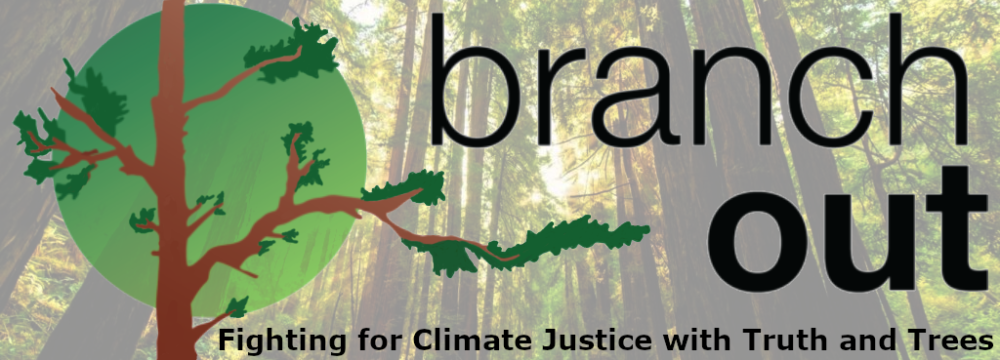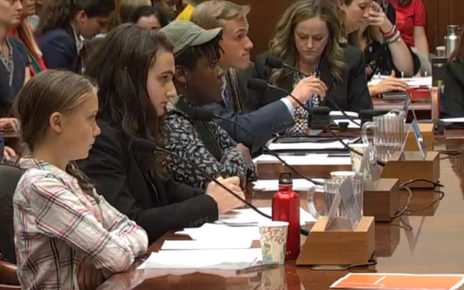In 1988, NASA Scientist James Hansen provided groundbreaking testimony before the U.S. Congress on the data showing the reality and dangers of human-caused global warming. Former Vice President and presidential nominee Al Gore called the problem An Inconvenient Truth. In the following decade, there were many conversations yet little action, and others who call the problem a “hoax” have yet to start the real conversation. With the United States leaving the Paris Agreement and continuing to promote fossil fuels, the urgency of our situation has sparked an epic increase in protest by environmental coalitions.
Young people in the movement to take action on climate justice now have been some of the most outspoken and impactful advocates, as they see the future under imminent threat. Recently, students have organized #FridaysforFuture strikes around the world inspired by Swedish teen Greta Thunberg, but youth-led action is not new. Last year in the US, high school students with #ThisIsZeroHour marched on Washington DC to demand action from legislators. Before that, Xiuhtezcatl Martinez from Colorado had already spent most his life advocating for action, starting the group Earth Guardians and suing the President in the Julianna vs. the United States case before even turning 18. Teens have earned seats at the table of climate talks, worldwide recognition for their efforts, and every day, more young people get involved in the fight.
Emma Galbraith, a 17-year-old junior at Austin High School in Austin, Texas, first heard about the strikes while scrolling through instagram. She recalls seeing the account @ClimateStrikeATX and wondering, “Are there actually youth in Texas who are passionate about climate action? … so I got in touch and was like ‘hey how can I help?’” Galbraith was no stranger to helping the environment, having previously raised money for the World Wildlife Fund, but until hearing about the strikes, she felt like she had no way of specifically addressing climate change.
Galbraith got involved as a School Ambassador encouraging turnout at strikes in Austin. She also manages social media accounts @350Austin and @SunriseATX. I asked her what she hopes the strikes will accomplish: “Above all else I would really like to see them succeed in reaching out to youth who feel as disempowered as I did and to youth who aren’t aware of how severe the climate crisis is … I hope it’s able to get them on the same page”
Although Austin is known as being a more left-wing bubble in a mostly red state, Galbraith has talked to plenty of people who are skeptical that climate change is a serious issue. Even people who agree that our leaders have not done enough to address the crisis are not necessarily supportive of students walking out on their classes. Galbraith explained why young people are trying to take matters into their own hands: “It shouldn’t be the responsibility of young people to be on the frontlines pushing for action, but because we see that we are not getting the support we need from a lot of adults that hold more power than we do, at this point it’s just a necessity for us to become our own advocates for our own futures.”
To people who think she should just stay in school, the 17-year-old responds rhetorically, “What’s the point of school if im not fighting for a future where my schooling will matter?” Young people’s energy has been fueled in part by the Inter-Governmental Panel on Climate Change, IPCC, report that gives humanity a 12 year deadline to drastically cut emissions and begin restoring the natural world, or else the worst effects of runaway global warming will be unavoidable. “I’m gonna be 29 in 12 years so I’ll only be 7 years out of college and by then it will be too late if I delay my personal actions toward climate justice until that point.”
Ultimately, adults must recognize that the energy and urgency young people bring to the table is long overdue. Perhaps it’s easier for youth to take to the streets, since they do not yet have jobs or families of their own. Galbraith said she can see how “adults feel a little bit more trapped than youth do.” Today, however, the climate action movement needs adults to fulfill their own obligation to making the planet habitable for future generations. One big thing adults can do is, at all levels of government, only vote for candidates with a real climate change platform, and if there are none, run for office.
For those with no political ambitions, the way Emma Galbraith got involved with her local strike can serve as a model. She encourages people to do what she did: “I looked up environmental organizations I contacted them and asked what I could do. If they had a volunteer form I filled it out. I think that’s a great first step for anyone. Just get your name out there talk to real people who know what they’re doing. One way or another, you will find yourself in the movement because I think everyone has an important role to play.”
As the movement has grown, it has been a source of personal comfort as well as a platform for systemic change. It has united previously isolated youth who are using their voice to advocate for their future, and it shows no sign of slowing down. When asked about the future, Galbraith said “obviously I’m scared” but went on to add how connecting with other people that want to make change “brings hope and cuts through the fear a little bit so each day I can now wake up and i dont feel this overwhelming crushing sense of despair, I think here’s a list of things that I can do. I’m going to go do them today.”


